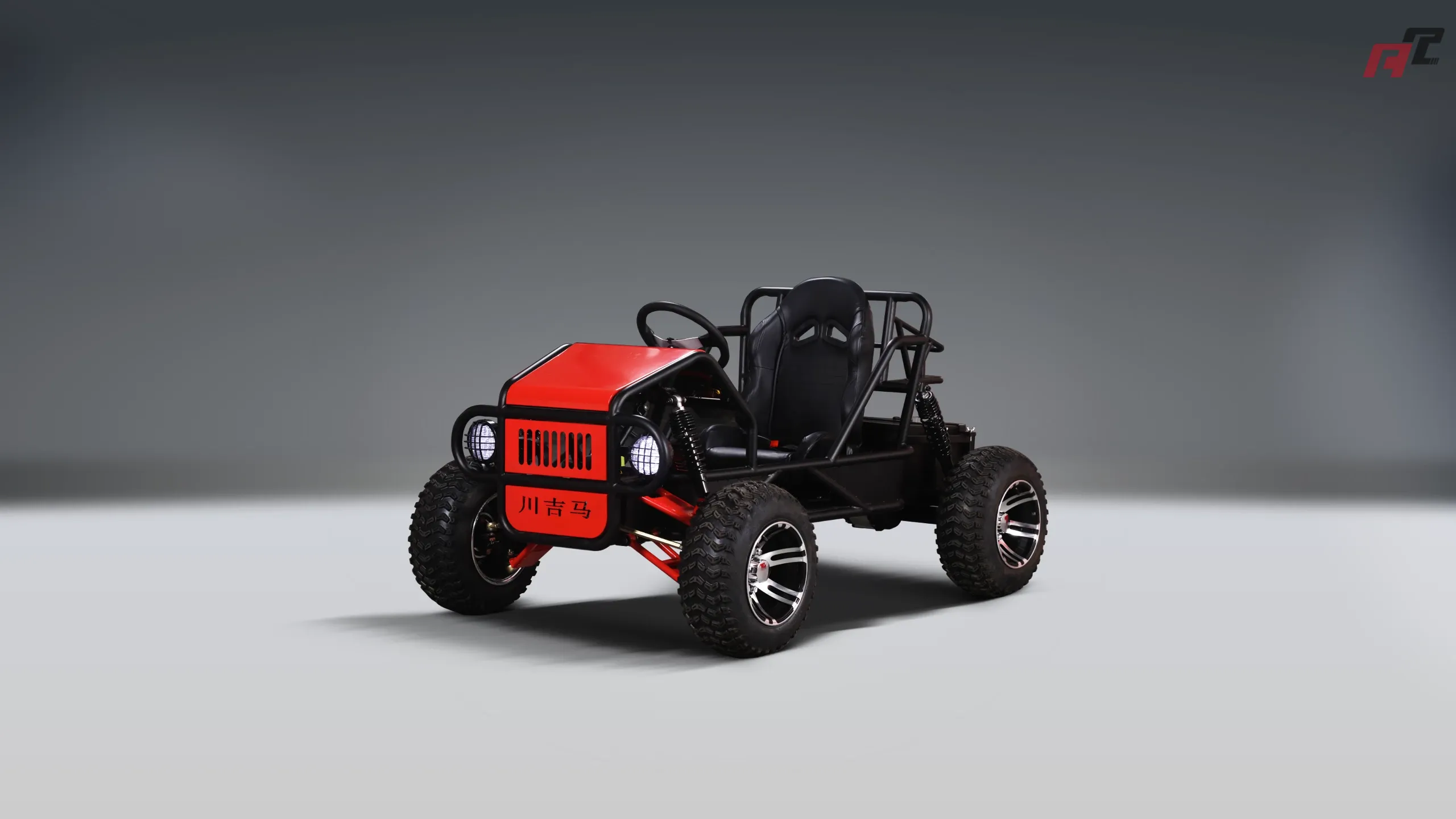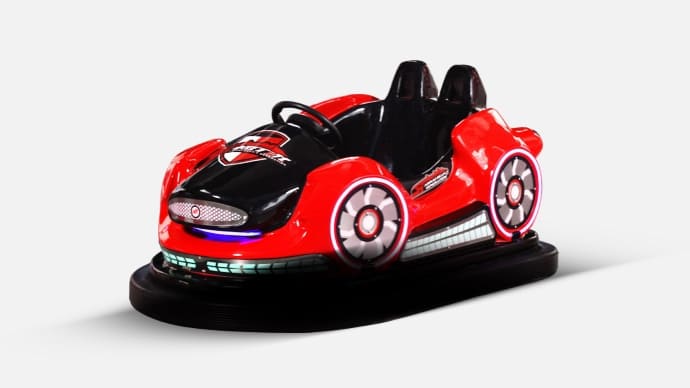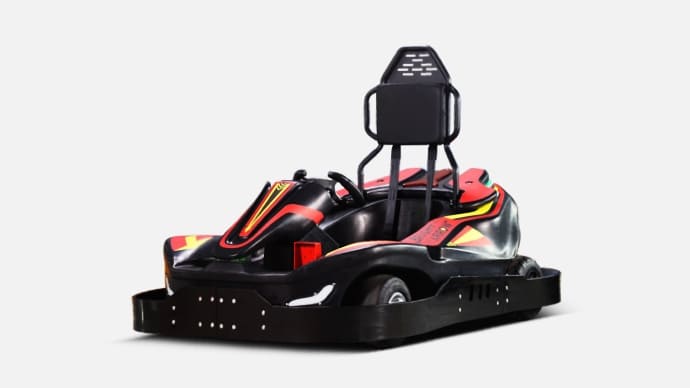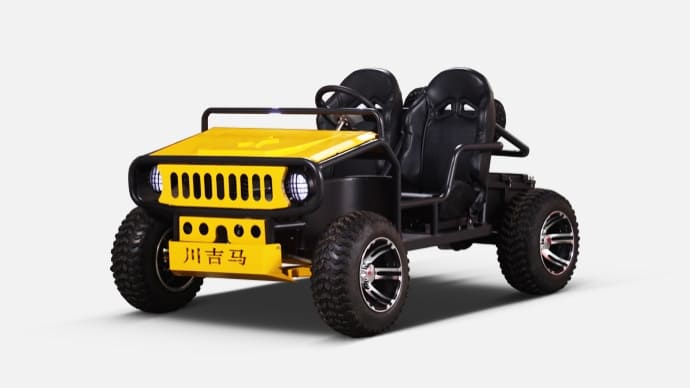Maintenance Checklist for Battery Bumper Cars in Go-Kart Parks
- Maintenance Checklist for Battery Bumper Cars in Go-Kart Parks
- Introduction: Why maintenance matters for Battery Bumper Car fleets
- About ANCHI Amusement and our expertise in Battery Bumper Car solutions
- Daily checklist: keep operations safe and smooth
- Weekly checklist: prevent wear accumulation
- Monthly checklist: systems and performance checks
- Quarterly checklist: preventive maintenance and parts replacement
- Annual checklist: comprehensive inspection and certification
- Battery care: extend life and maximize uptime for Battery Bumper Car batteries
- Charger and BMS checks: protect batteries and guests
- Electrical systems: wiring, connectors and controls
- Mechanical systems: steering, bumpers, and chassis
- Cleaning and corrosion prevention for Battery Bumper Cars
- Training and SOPs: human factors in maintenance
- Spare parts and inventory management
- Troubleshooting common Battery Bumper Car issues
- Data-driven maintenance: logs and KPIs
- Cost and technology comparison: Lead-acid versus LiFePO4 for Battery Bumper Car fleets
- Selecting the right battery for your park
- Safety reminders specific to Battery Bumper Car maintenance
- Recordkeeping templates and recommended logs
- Partnering with manufacturers for optimized maintenance
- FAQ: Common questions about Battery Bumper Car maintenance
- How often should batteries be replaced in Battery Bumper Cars?
- What are the signs a battery pack needs service or replacement?
- Can I use faster chargers to reduce turnaround time?
- Are there environmental or storage tips for batteries in seasonal parks?
- How does ANCHI Amusement support maintenance needs?
- Who should I contact for an emergency breakdown?
Maintenance Checklist for Battery Bumper Cars in Go-Kart Parks
Introduction: Why maintenance matters for Battery Bumper Car fleets
Proper maintenance of Battery Bumper Car fleets reduces downtime, improves guest safety, and extends equipment life. For go-kart parks and family entertainment centers, a clear, repeatable checklist helps technicians and operators meet safety standards, control costs, and keep ride availability high.
About ANCHI Amusement and our expertise in Battery Bumper Car solutions
ANCHI Amusement is one of the leading manufacturers of amusement equipment in China. We design and produce a broad range of electric amusement vehicles, including bumper cars and go-karts, and provide venue design and after-sales service. With over 5,000 square meters of production space and a team of more than 30 skilled technicians, ANCHI blends R D and manufacturing to deliver reliable Battery Bumper Car systems and turnkey venue solutions. Learn more at https://www.anchiamusement.com/.
Daily checklist: keep operations safe and smooth
Perform these daily checks before opening to the public. A short, consistent routine prevents small faults from becoming safety hazards for Battery Bumper Car rides. Daily tasks include visual inspection of bumper impact zones, seat belts or restraints, battery state indicators, charger connections, and a short operational test of each car.
Weekly checklist: prevent wear accumulation
Weekly inspections should be deeper than daily checks. Verify tire and caster condition, check for loose fasteners on bumpers and frames, confirm battery electrolyte or terminal condition if applicable, inspect wiring for chafing, and test emergency stop systems on several cars. Log findings and remediate minor issues immediately.
Monthly checklist: systems and performance checks
Monthly tasks include full battery health checks, motor and controller temperature monitoring during a typical run cycle, throttle responsiveness testing, steering play adjustments, and verification of charger performance and ventilation. Calibration of battery management systems and controllers should be performed according to manufacturer guidance.
Quarterly checklist: preventive maintenance and parts replacement
Every 3 months, perform scheduled preventive maintenance on drive motors, bearings, and gearboxes where applicable. Replace wearable items such as brake pads, rubber bumper strips, and steering components as needed. Conduct a full inspection of the electrical harness and connections, including corrosion checks on terminals and switches.
Annual checklist: comprehensive inspection and certification
Annually, conduct a comprehensive inspection that covers frame integrity, full battery replacement plans if required, motor insulation testing, and a full software and firmware audit of controllers and BMS units. Consider third-party safety audits or certification tests to meet local regulatory requirements.
Battery care: extend life and maximize uptime for Battery Bumper Car batteries
Battery health is crucial for Battery Bumper Car operation. Follow charging best practices, avoid deep discharges, keep batteries at recommended storage temperatures, and use chargers matched to battery chemistry. Track cycles and State of Charge trends to forecast replacement. For sealed lead-acid batteries expect 300 to 800 cycles depending on usage and care; LiFePO4 packs typically provide 2000 to 5000 cycles under optimal conditions.
Charger and BMS checks: protect batteries and guests
Inspect chargers monthly for correct output, damaged cords, and ventilation. Verify that the Battery Management System is balancing cells and logging faults. Where available, download BMS logs to identify charging anomalies or failing cells early.
Electrical systems: wiring, connectors and controls
Regularly inspect high-current cabling, connectors, and circuit protection devices. Look for worn insulation, loose crimps, heating discoloration, or corrosion. Check controller heat sinks and fan function. Ensure emergency cutoffs and isolation switches are functioning and clearly labeled for staff.
Mechanical systems: steering, bumpers, and chassis
Steering and mechanical components should be lubricated and checked for play. Bumpers, mounting brackets, and the chassis must be structurally sound. Replace cracked or heavily deformed bumpers immediately. Verify that impact absorption elements are intact and securely fastened for consistent guest protection.
Cleaning and corrosion prevention for Battery Bumper Cars
Keep cars clean to prevent dirt build-up that can hide damage or accelerate wear. Use non-corrosive cleaners and avoid direct water spray on electrical compartments. Apply protective coatings to exposed metal and terminals as recommended by the manufacturer to reduce corrosion in humid venues.
Training and SOPs: human factors in maintenance
Provide clear standard operating procedures and training for maintenance staff and ride operators. Include safe battery handling, charging room rules, PPE requirements, lockout tagout for electrical work, and emergency response steps. Regular training reduces error and improves response times for faults.
Spare parts and inventory management
Maintain a critical spare parts list for Battery Bumper Car fleets: fuses, contactors, spare chargers, replacement batteries or cells, steering components, and bumper materials. Track parts usage and lead times; keep essential spares on-hand to minimize downtime.
Troubleshooting common Battery Bumper Car issues
Common problems include reduced runtime, inconsistent steering, intermittent power loss, and charger faults. Use a structured troubleshooting flow: check battery indicators and BMS logs, test charger output, inspect wiring and connectors, and isolate motors or controllers for bench testing. Document repairs for trend analysis.
Data-driven maintenance: logs and KPIs
Keep digital maintenance logs to track failures, repair times, and battery cycle counts. Useful KPIs include mean time between failures (MTBF), mean time to repair (MTTR), average runtime per charge, and cost per operating hour. Data helps plan replacements and optimize maintenance intervals.
Cost and technology comparison: Lead-acid versus LiFePO4 for Battery Bumper Car fleets
Choosing battery chemistry affects lifecycle costs and maintenance needs. The table below summarizes typical differences to help operators make informed decisions.
| Characteristic | Lead-acid (VRLA) | LiFePO4 |
|---|---|---|
| Typical cycle life | 300–800 cycles | 2000–5000 cycles |
| Maintenance | Moderate, monitor terminals, avoid deep discharge | Low, requires BMS and temperature control |
| Upfront cost | Lower | Higher |
| Total cost of ownership | Higher over long term due to replacements | Lower over long term |
| Weight | Heavier per kWh | Lighter per kWh |
| Charge time | Moderate | Faster with proper chargers |
Selecting the right battery for your park
Decide based on upfront budget, expected use cycles, weight constraints, and long-term operating costs. LiFePO4 often wins on lifecycle cost and lower maintenance, but require compatible chargers and BMS. Consult with your equipment manufacturer — for example, ANCHI Amusement can advise on battery and charger options tailored to your Battery Bumper Car models.
Safety reminders specific to Battery Bumper Car maintenance
Always follow lockout and tagout before doing electrical work. Store batteries in ventilated areas and away from heat sources. Dispose of batteries through certified recycling channels. Use PPE when handling heavy batteries and ensure two-person lifts for larger packs.
Recordkeeping templates and recommended logs
Maintain daily checklists, work order histories, battery cycle logs, and parts usage records. Use simple spreadsheets or maintenance management software. Records support warranty claims and provide evidence of due diligence for insurers or inspectors.
Partnering with manufacturers for optimized maintenance
Work closely with your manufacturer for firmware updates, spare parts sourcing, and training. ANCHI Amusement offers technical support, customization, and after-sales service for Battery Bumper Car fleets to help parks reduce downtime and optimize Total Cost of Ownership.
FAQ: Common questions about Battery Bumper Car maintenance
How often should batteries be replaced in Battery Bumper Cars?
Battery replacement depends on chemistry and usage. Lead-acid batteries typically need replacement every 2–4 years under heavy use; LiFePO4 can last 5–10 years. Monitor cycle counts and capacity loss to decide replacement timing.
What are the signs a battery pack needs service or replacement?
Signs include rapid runtime reduction, visible swelling or leakage, unusual heating during charge or use, and frequent BMS fault codes. If capacity drops below 80% of rated capacity, consider replacement planning.
Can I use faster chargers to reduce turnaround time?
Only use chargers specified for your battery chemistry and pack. Fast charging can reduce battery life if not managed by an appropriate BMS and thermal controls. Consult the battery and vehicle manufacturer before changing chargers.
Are there environmental or storage tips for batteries in seasonal parks?
Store batteries at partial charge (typically 40–60% for long-term storage) in a cool, dry place. Check state of charge monthly and recharge if needed. Follow manufacturer storage temperature guidelines to avoid capacity loss.
How does ANCHI Amusement support maintenance needs?
ANCHI Amusement provides spare parts, technical documentation, staff training, and after-sales service for Battery Bumper Car fleets. We offer venue design and equipment customization to match operational demands and maintenance workflows. Visit https://www.anchiamusement.com/ to request support.
Who should I contact for an emergency breakdown?
Follow your internal emergency protocol first. For manufacturer support, contact ANCHI Amusement customer service through the website for parts and technical guidance. Keep a list of local technicians and spare parts for rapid response.
Wholesale bumper car ride on manufacturer and supplier
Wholesale electric go kart for sale adults manufacturer and supplier
OEM/ODM 1000w electric go kart Manufacturers and supplier in China
Best bumper cars nyc manufacturers and supplier brands
About Customized Service
How long does customized service take?
The time for customized services depends on your specific needs and order volume. Generally speaking, we will provide you with customized solutions as soon as possible.
Is there a minimum order quantity requirement for customization services?
Customized services may have minimum order requirements based on your specific needs and product type, please consult our sales team for details.
About Logistics
How to track my order?
You can track your order through our sales manager, and learn about the logistics status and delivery progress of your order at any time.
After Sales Support
What should I do if there are problems when using the product?
If you encounter any problems when using the product, please contact our customer service team in time, and we will wholeheartedly provide you with technical support and solutions.
About Cooperation Process
What safety features are available for your customized amusement ride equipment?
Safety is paramount. We offer customizable safety features such as harness systems, emergency stop mechanisms, protective barriers, and operator controls designed to ensure rider safety and comply with industry standards. These features are tailored to enhance both guest enjoyment and operational peace of mind.

Cyclone RS 2025 1200W Electric Go-kart for Home Entertainment Centers
The Cyclone RS 2025 is a high-performance electric ride-on car designed for thrill-seekers, entertainment centers, and commercial amusement businesses. Built with a durable ABS body and reinforced metal chassis, it combines strength, safety, and speed for a superior driving experience. With a 1200W mid-mounted motor (peaking at 3600W), advanced control system, and long-lasting 72V20AH LiFePO₄ battery, this ride ensures both powerful performance and reliability.
Whether for amusement parks, game zones, rental businesses, or personal recreational use, the Cyclone RS 2025 delivers unmatched excitement and durability.

Kids Electric Off Roads One-seater ATV
Discover adventure with the ANCHI Kids Electric One-seater ATV, the perfect electric off-road experience for young explorers. Designed for safety and performance, this electric off-road go kart for kids offers unmatched thrills on any terrain. Its durable build and easy-to-use controls ensure a fun and safe ride. Ideal for budding adventurers, this ATV promises endless excitement. Explore the world with confidence with ANCHI’s innovative electric off-road solutions for kids.

Battery Drift Bumper Car With inflatable tyre
The Battery Drift Bumper Car with Inflatable Tire with 650W steel gear motor, and high quality battery wich can becharged outside the car, the bumper car is ideal for amusement parks, family entertainment centers, build quality for safe, long-lasting fun.

Spaceship Laser Battle Bumper Car
Discover the future of fun with the ANCHI Spaceship Laser Battle Bumper Car! Designed for thrill-seekers, this kids bumper car offers an exhilarating laser battle experience. Parents and children alike will enjoy hours of safe, exciting play. Ideal for parties or everyday fun, it combines durability with innovative technology.










